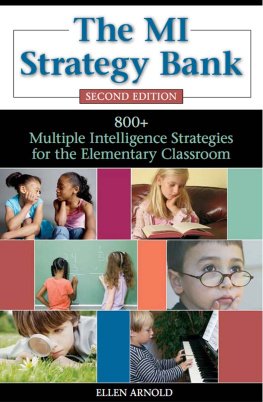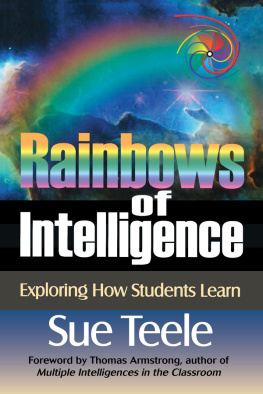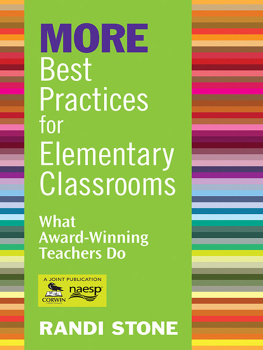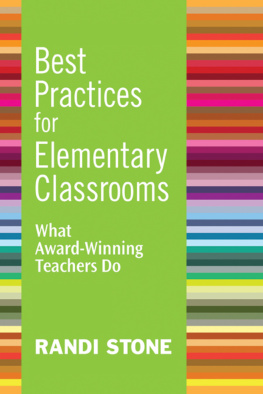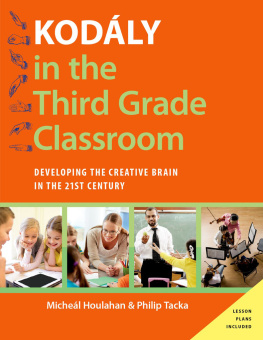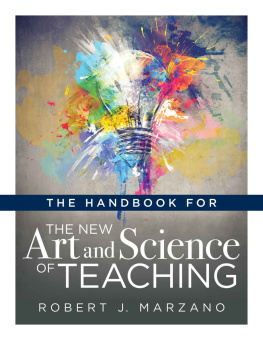

Library of Congress Cataloging-in-Publication Data
Arnold, Ellen, 1944
The MI strategy bank : 800+ multiple intelligence ideas for the elementary classroom / Ellen Arnold.2nd ed.
p. cm.
Includes bibliographical references and index.
ISBN-13: 978-1-56976-210-3 (alk. paper)
ISBN-10: 1-56976-210-4 (alk. paper)
1. Learning strategies. 2. Learning disabled--Education. 3. Multiple intelligences. I. Title.
LC4704.A76 2007
371.90472dc22
2006031675
All rights reserved. The purchase of this book entitles the individual teacher to reproduce the forms for use in the classroom. The reproduction of any part for an entire school or school system or for commercial use is strictly prohibited. No form of this work may be reproduced, transmitted, or recorded without written permission from the publisher.
Cover and interior design: Sarah Olson Icons designed by Deborah Farber Isaacson
This book is only as valuable as the input from people like you, real teachers and real learners, who want to build their toolbox of strategies for success. Please contact me to let me know which strategies worked best.
Ellen Arnold, Ed.D.
www.arncraft.com
1998, 2007 by Ellen Arnold
All rights reserved
Published by Zephyr Press
An imprint of Chicago Review Press, Incorporated
814 North Franklin Street
Chicago, Illinois 60610
ISBN-13: 978-1-56976-210-3
ISBN-10: 1-56976-210-4
Printed in the United States of America
CONTENTS
INTRODUCTION
What Is the Purpose of This Guide?
Teaching elementary students who have difficulty learning in traditional ways can be exciting, challenging, and enriching, but sometimes frustrating. Creative and dedicated teachers will try various strategies to discover the best method to help each child. The theory of Multiple Intelligences (MI), developed by Howard Gardner, can shortcut the trial and error often employed to find the best teaching strategy for each child.
The premise of this book is that when you understand the natural and unique strengths of a learner who may be struggling with traditional academic learning, you uncover a range of possibilities that might otherwise be hidden. When you help learners build on their existing cognitive strengths, they often find learning to be easier and a great deal more fun.
Another benefit of this approach is that when students learn to use strategies that match their strengths, they are usually motivated and see success quickly. This leads them to adapt and transfer these same thinking patterns to other learning opportunities. They think of the tasks as fun rather than frustrating.
The purpose of this guide is to help teachers, support staff, and parents to streamline the process of helping students to find ways to be successful in school. You will learn:
- how to use a strength-based interview to identify the childs perceived strengths;
- how to code the childs perceptions into the MI framework;
- how to create a hypothesis about the learner and the types of interventions to try;
- how to use the chapters in this book to identify strategies that build on the childs strengths while working on the skill or behavior that is most problematic for the child;
- how to capture this information in a format that can be used to communicate with other adults who interact with the child;
- how to help the child to understand better his or her own brain;
- how the child can creatively build a strategy bank that taps strengths to work on weaknesses;
- how to provide a language the child can use to effectively self-advocate in order to reach mastery and independence;
- how to use this book as a resource for child study teams whose mission is to support childrens learning.
Since this book was first written, I have continued to use and refine this method and these materials as teachers provide me with feedback about their students. As I was working on revising this book, I asked many of my elementary school colleagues: What was missing? What would make this material more helpful? What lessons or topics would you like to see added? I am grateful to these dedicated professionals for their suggestions, which included the topics of organization, homework, assessment, and self-advocacy. The triggers used in the strength-based interventions were created in response to teacher requests for quick and easy ways to think about differentiation using MI. These quick reminders should help to get your own creative juices flowing, particularly when the child who is struggling has a strength in your area of weakness, which makes it hard for you to be creative. When you see how other people have used their various intelligences, you have additional avenues to explore.
The current interest in differentiated instruction (DI) throughout the United States has added more excitement to this approach. As teachers move toward developing a truly DI classroom, they are asking for resources that can help them bridge their students current levels with the school districts standards-based expectations. I hope that this book can serve as an effective tool helping them reach that goal.
As a practitioner, I have had the joy of following many of the children whose backgrounds and thinking approaches are captured in this book. I have witnessed these strategies being used with elementary students from coast to coast. You can replicate the success reflected in these pages by following this strength-based MI approach.
Learners: The Real Experts
Research on empowered learners tells us that people rarely learn anything new or difficult by using only their areas of weakness. Successful learners have learned, often unconsciously, to adapt any new learning to their areas of strength in order to master new material. For example, when Emma (see the case study on page ) could not remember words, she learned to use her love of dance to practice movements that reminded her of the letters. She knew hundreds of dance steps and several ballets from start to finish, even though she was only in second grade. When asked whether she thought she would remember the letters and words that she choreographed, she responded, Well, of course. I danced them, didnt I?
Most unsuccessful learners are stuck trying to use methods that work for other people but that do not work for them. When they try and fail, their confidence and belief in their own abilities are diminished. Learning to use strengths can be the powerful key that allows such learners to learn more effectively.
Some people have said, Yes, well, this might work with high school kids, but not young children. Wrong! I have interviewed children as young as three, and once did a revised version of it with a nonverbal, autistic five-year-old. It worked! Children are fascinated with learning more about their brains and about thinking and learning, especially when the approach is interactive, creative, and fun. The only difference between using this approach with a first grader and a tenth grader is the level of vocabulary you might use and the number of props you might have available for the student to use. Elementary school children do know what works for them. They may not have the vocabulary to communicate it clearly to you in words, but if you listen, they will give you the information that you need.
Next page
